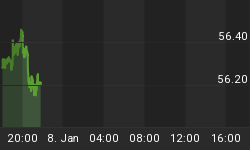The Federal Reserve doesn’t know what to do. That’s too bad. For all of us.
The bigger problem is that it probably doesn’t make much difference what they do – or don’t do.
The definition of dilemma is: “a situation in which a difficult choice has to be made between two or more alternatives, especially equally undesirable ones.”
We are hooked on low interest rates and the drug of cheap and easy credit.
Raising interest rates could trigger another credit implosion which could lead to deflation and a full-scale depression.
Maintaining low interest rates furthers the dependency on cheap and easy credit. This heightens the risk of overdose and could also lead to a swift and renewed weakening – and hasten the eventual death – of the U.S. dollar.
If the Fed emphasizes and proceeds with the liquidation of debt securities on its balance sheet, it could directly usher in severely higher interest rates – unintentionally; and collapse the debt markets.
Doing nothing is an option. The problem with that choice is that they are holding a ticking time bomb and don’t know how long it will be until their world blows apart.
Regardless of any specific action or inaction by the Fed, we will see a complete and utter destruction of the U.S. dollar at some point.
And it is the Federal Reserve and U.S. government who are responsible.
The Fed knows this. More specifically, Janet Yellen know this. What would you do if you were her?
Talk. Talk. And more talk. Redirect, misdirect, and obfuscate. Keep it together. Make it last a bit longer. Just get me to the end of my term. Then “get the hell out of Dodge”.
It is difficult to believe that Ms. Yellen believes her own words to the effect of “another financial crisis is unlikely in our lifetime because of the measures the Fed has taken”. It is precisely because of measures the Fed has taken since its inception over one hundred years ago and the cumulative effects of those measures, that make it even more likely we will experience another financial crisis in our lifetime.
Be that as it may, if Ms. Yellen makes it through the current year unscathed, she won’t be hanging around afterwards. She won’t want to extend her risk of being at the helm when the ship sinks.
And don’t trouble yourself worrying about who the next Fed chief will be. It doesn’t matter. It is too late in the game for a quarterback change to have any meaningful impact.
One sign in particular is quite worrisome to the Fed. The failure to attain and maintain a two percent inflation target is a major red flag. It is an indication that the inflation and low-interest rate policies are not having the desired impact.
As with a drug addict, each succeeding monetary fix has less and less impact. The fixes at best allow the patient (i.e. the economy) to sustain life temporarily. And with each passing day, the possibility of slipping into a coma (recession, depression, etc) increases.
The Fed is stuck between a rock and a hard place. (Every other overused phrase of similar meaning is just as applicable.) But that is only the tip of the iceberg.
The worst possibilities comes after something big happens. The Federal Reserve and the U.S. government will work together to stave off any possibility of loss of control. Which means everyone – investors, traders, citizens, communities – will be subject to a host of new economic and monetary regulations, restrictions, executive orders, etc.
It will be like nothing we have seen in the past and beyond anything we can currently comprehend.
Read more about the Federal Reserve here.
By Kelsey Williams for Safehaven.com
















